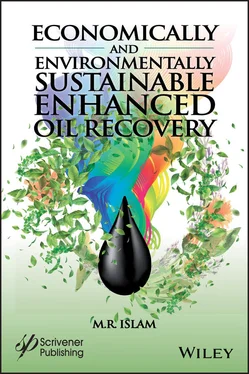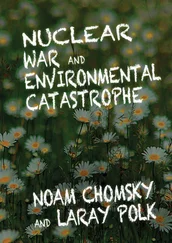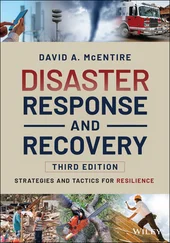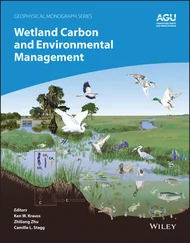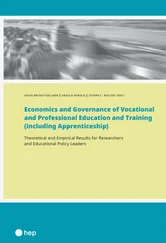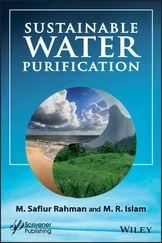2.5.3 Renewable vs Non-Renewable: No Boundary-As-Such
Chhetri and Islam (2008) elaborated the notion that the ‘finite resource’ is not scientific. With sustainable recovery tools, resources are infinite and are part of the continuous cycle. Figure 2.15 shows that as the natural processing time increases, the energy content of the natural fuels increases from wood to natural gas. The average energy value of wood is 18 MJ/kg (Hall, and Overend, 1987) and energy content of coal, oil and natural gas are 39.3MJ/kg, 53.6MJ/kg and 51.6MJ.kg, respectively (Website 4). Moreover, this shows that the renewable and non-renewable energy sources have no boundary. It is true that solar, geothermal, hydro and wind sources are being renewed at every second based on the global natural cycle. The fossil fuel sources are solar energy stored by the trees in the form of carbon and due to the temperature and pressure, they emerge as coal, oil or natural gas after millions of years. Biomass is renewed from a few days to a few hundred years (as a tree can live up to several hundred years). These processes continue forever. There is not a single point where fossil fuel has started or stopped its formation. So, why these fuels are called non-renewable? The current technology development mode is based on a short-term approach as our solution of the problems start with the basic assumption that ‘∆t tends to =0’. Only technologies that fulfill the criterion of time approaching infinity are sustainable (Khan and Islam, 2007). The only problem with fossil fuel technology is that they are rendered toxic after they are refined using high heat, toxic chemicals and catalysts.
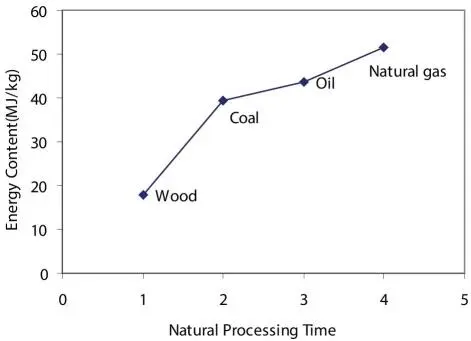
Figure 2.15Energy content of different fuels (MJ/kg) (from Spight and Islam, 2016).
From the above discussion, it is clear that fossil fuels can contribute to a significant amount of energy by 2050. It is widely considered that fossil fuels will be used up soon. However, there are still huge reserves of fossil fuel. The current estimation on the total reserves is based on the exploration to-date. If one assumes a priori that reserves are declining with time (Figure 2.16a), one fails to see the role of exploration and drilling activities. As the number of drillings or exploration activities increases, more recoverable reserves can be found (Figure 2.16c). In fact, Figure 2.16 is equally valid if the abscissa is replaced by ‘time’ and ordinate is replaced by ‘exploratory drillings’ (Figure 2.16b). For every energy source, more exploration will lead to a larger fuel reserve. This relationship makes the reserve of any fuel type truly infinity, and alone can be used as a basis for developing technologies that exploit local energy sources.
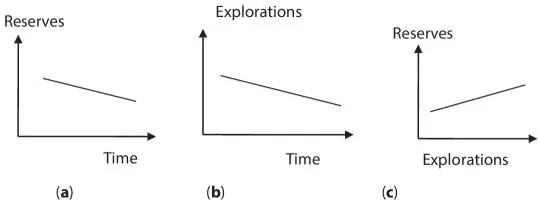
Figure 2.16Fossil fuel reserves and exploration activities.
The US oil and natural gas reserves reported by the EIA consistently show that the reserves over the years have increased (Table 2.6 gives a sampler). These additional reserves were estimated after the analysis of geological and engineering data. Hence, based on currently observed patterns, as the number of exploration increases, the reserves will also increase.
Figure 2.17 shows that the discovery of natural gas reserves increases as exploration activities or drillings are increased. Biogas in naturally formed in swamps, paddy fields and other places due to the natural degradation of other organic materials. As shown in previous sections, there are huge gas reservoirs including deep gas, tight gas, Devonian shale gas and gas hydrates, which are not yet exploited. The current exploration level is limited to shallow gas, which is a small fraction of the total natural gas reserve. Hence, by increasing the number of exploration activities, more and more reserves can be found which indicates the availability of unlimited amount of fossil fuels. As the natural processes continue, formation of natural gas also continues for ever. This is applicable to other fossil fuel resources such as coal, light and heavy oil, bitumen and tar sands.
Table 2.6US crude oil and natural gas reserve (Million barrels) (From Islam, 2014).
|
Year |
Reserve |
% Increment |
| Crude Oil Reserve |
1998 |
21,034 |
|
| 1999 |
217,65 |
3.5% |
| 2000 |
22,045 |
1.3% |
| 2001 |
22,446 |
1.8% |
| Natural Gas |
1998 |
164,041 |
|
| 1999 |
167,406 |
2.1% |
| 2000 |
177,427 |
6.0% |
| 2001 |
183,460 |
3.4% |
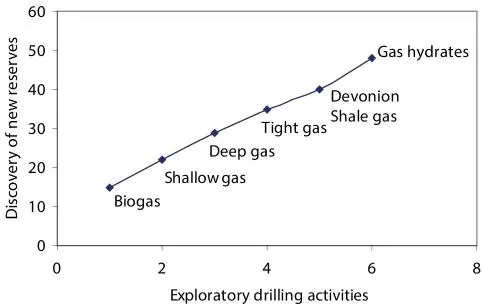
Figure 2.17Discovery of natural gas reserves with exploration activities (From Islam, 2014).
Figure 2.17 shows the variation of resource base with time starting from biomass to natural gas. Biomass is available on earth in huge quantities. Due to natural activities, the biomass undergoes various changes. With heat and pressure on the interior of the earth, formation of fossil fuels starts due to the degradation of organic matters from the microbial activities. The slope of the graph indicates that the volume of reserve decreases as it is further processed. Hence, there is more coal than oil and more oil than natural gas, meaning unlimited resources. Moreover, the energy content per unit mass of the fuel increases as the natural processing time increases. The biomass resource is renewable and the biological activities continue on the earth, the process of formation of fossil fuels also continues forever. From this discussion, the conventional understanding of there being a fine boundary between renewable and non-renewable energy resources is dismantled, and it is concluded that there is no boundary between the renewable and non-renewable in the long run, as all natural processes are renewable. The only problem with fossil fuels arises from the use of toxic chemicals and catalysts during oil refining and gas processing. Provided the fossil fuels are processed using the natural and non-toxic catalysts and chemicals, or make use of crude oil or gas directly, fossil fuel will still remain as a good supplement in the global energy scenario in the days to come. These resources are totally recyclable.
Historically, truly sustainable lifestyle belongs to the pre-Industrial era. Every technology of ancient and Medieval era was sustainable, for which both energy and mass sources were natural. The introduction of electricity (artificial energy) and ubiquitous plastic (artificial mass) has created the culture of crisis that the world faces today. As we entered the Information Age, both the political ‘left’ and ‘right’ have missed the point that artificial lifestyle makes a process unsustainable. Politically, it has become fashionable to characterize petroleum (and all carbon-based energy technologies) as the source of unsustainability, while hailing non-carbon based sources as inherently sustainable (naming them ‘renewable’). The climate change crisis has been utilized to drum up support for the ‘left’. The ‘right’ on the other hand has failed to highlight the real positive aspects of fossil fuel, thereby marginalizing themselves as opposers of ‘settled science’, or worse, conspiracy theorists. This debate has been accentuated in the Information Age, with no end in sight.
Читать дальше
